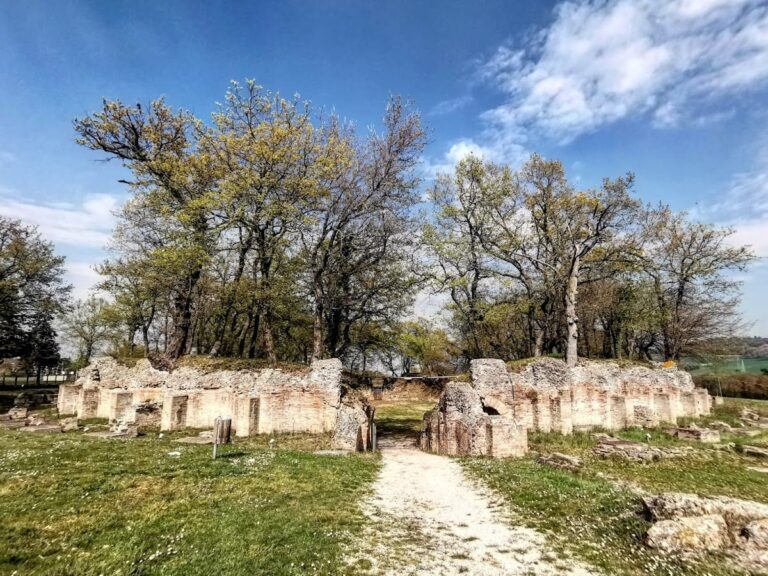Castel di Luco: A Historic Castle in Acquasanta Terme, Italy
Visitor Information
Google Rating: 4.8
Popularity: Low
Google Maps: View on Google Maps
Official Website: www.casteldiluco.it
Country: Italy
Civilization: Unclassified
Remains: Military
History
Castel di Luco is situated in the municipality of Acquasanta Terme in Italy. Its origins are not precisely known, but it lies in an area rich with ancient history and strategic importance. Two main theories explain its beginnings. According to the 16th-century historian Giuseppe Colucci, the site may have originally been a sacred place used by Italic and Roman peoples, featuring a holy grove and altars dedicated to local gods. Another historian, Bernardo Carfagna, suggested that the castle’s foundation could have emerged during the Byzantine period as part of a military and territorial reorganization, designed to establish new garrisons in the region.
Before the rise of the Ascoli commune, Castel di Luco likely served as a seat of local justice. Its position made it a defensive stronghold that resisted assaults, notably from Charles I of Anjou and militias led by Galeotto I Malatesta, during times of conflict. By the 13th century, the castle was under the control of the Sforza family, a notable name in Italian nobility. Ownership later transferred to the Ciucci family, who maintained possession from the 15th century into the 19th century.
A significant event took place on August 10, 1445, when Pietro di Vanne Ciucci, the lord of Luco, commanded a group of mountain men from the castle to liberate the nearby city of Ascoli Piceno from Rinaldo di Folignano’s domination. Afterward, Ciucci declared the area under the sovereignty of the papacy. In 1562, the castle’s defender, Chiarino Montaroni, was killed by the bandit Parisani, who disposed of his body in the nearby Tronto River, illustrating the turbulent security climate of the time.
Over the centuries, Castel di Luco evolved from a fortress focused on defense to a noble residence belonging to the Ciucci family. This status continued until around 1800, when the property passed through marriage into the hands of Giuseppe Amici and his descendants. In the 21st century, the castle suffered damage caused by the 2016–2017 central Italy earthquakes. After restoration work that concluded in 2024, the building was reopened and re-purposed for hospitality use.
Remains
Castel di Luco occupies a rock spur of travertine stone, a natural setting that enhances its defensive qualities by isolating it on a hilltop. Its layout is distinctive because of an elliptical shape that remains largely unchanged since medieval times. This form encloses an internal courtyard within walls that roughly follow the cliff’s edge, creating an irregular circular enclosure. Originally, the structure functioned as a castle-enclosure, providing living space for the lord, armed guards, family members, and serving as a refuge for local residents during periods of danger.
The fortress displays defensive features dating mainly from the 16th century, notably a prominent tower built with sloped, or battered, walls. These walls were designed to better withstand attacks and prevent enemies from scaling them easily, aided by a cordon anti-climb—an architectural detail resisting ascent. The tower includes firing slits intended for arquebuses, an early type of firearm, reflecting adaptations to emerging military technologies as the castle’s protective walls alone were insufficient. The fortification also likely had battlements, which are the castellated parapets at the top of walls allowing defenders to shelter while observing or firing on attackers.
Surrounding the perimeter of the castle are numerous travertine corbels, stone projections that supported wooden balconies and machicolations—openings in the floor of these structures that allowed defenders to observe and drop defenders objects directly on enemies below, all while remaining protected. A smaller defensive tower is positioned on the southeast side, augmenting the castle’s watch and defense capabilities.
As the castle’s role shifted from pure defense toward comfort and residence, expansions were made to accommodate new living needs. This growth led to the development of a small village clustered concentrically around the palace and rocky spur, illustrating the castle’s central role in the local community’s social and territorial organization over time.










